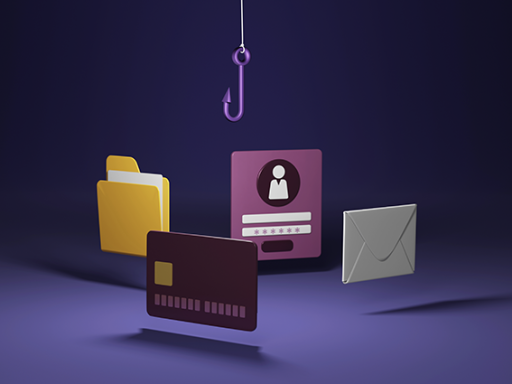Gone Phishing, catch you later

Did you know that cyber security incidents are so prevalent that one in two, yes, that’s right, half, or in other words, 50% of ALL businesses have suffered from a cyber-attack already. Some have experienced this multiple times, and it doesn’t matter what size your business is. It is a numbers game to the attackers. The bigger the organisation, the bigger the reward, but the hackers are happy to target smaller organisations with less security measures in place. Far better to successfully infiltrate 1000 small organisations and get them to pay ransoms than fail to hack 1 large organisation and get nothing.
What about the other half though? Do they have better security? May be, but it could also be that they have also suffered a security breach of some sort, but are blissfully unaware of it yet.
This information is from the UK Government's own survey on Cyber Crime, available to read here.
To make matters even more worrying, it's reported that last year, 83% of those questioned who are responsible for IT in businesses or organisation faced or dealt with at least one email security threat or incident. Again, most experienced multiple attacks because security threats are based on a numbers game, where malicious actors bank on a small number of emails getting through and causing an exploit from the millions sent out.
It costs very little to send out billions of emails across the world, it only needs a 0.1% success rate from a billion emails to result in 1,000,000 organisations being compromised. Think about it, only having a 0.1% success rate results in 1,000,000 compromised organisations. If they were to extract £100 from each organisation they compromised, the rewards to the hackers is £100,000,000 so you can see why they are so active in trying to compromise security and exploit organisations.
Most organisations have some security measures in place, but more often than not, organisations optimistically rely on staff to be vigilant, but attacks are becoming more sophisticated, using artificial intelligence (AI) to profile and target an organisation, exploiting the human weakness of familiarity, so if, at a glance, the email appears to come from someone within the organisation, it is more likely to succeed as the user is familiar with dealing with that person so is more likely to respond to requests to do things.
Hackers know that the weakest point of security in an organisation is the people, most people are helpful, wishing to collaborate with their colleagues, and it is this helpfulness that the hackers exploit. They prey on this vulnerability. People want to help each others in organisations and if they think they are helping a colleague, they are less likely to validate and verify where the email came from.
If they think it is from a colleague they are less likely to suspect the content, right? Combine this knowledge with the power of AI and hackers have a a very high success rate, often exploiting workers to pay invoices or make bank transfers to the hacker resulting in a fraudulent transaction and the business being out of pocket, often going un-noticed for a long period until the accounts are done and a discrepancy identified.
AI can harvest information from an organisation's websites, social media such as Linked-In, FaceBook, Instagram etc. so they can build a profile of individuals within the organisation and build an attack against that organisation.
This is why it is more important that ever to have sophisticated security in place to protect your business from Phishing threats that are ever evolving.
Security in IT should be layered to ensure multiple checks so that if one layer fails to prevent a threat, there is another layer to intercept.
Whilst Microsoft 365 has built in protections in email, it is not enough, which is why it is sensible to use additional tools to intercept threats in email.
Threat detection powered by AI, picks up real time threats, feeds the threat analysis back to a centralised network operations centre (NOC), where it is collated and then distributed out to all organisations using the same threat detection tool, providing an ever updated detection landscape that can keep abreast of real time ever changing threats.
This type of approach significantly reduces risk, but unfortunately doesn't eliminate it, which is why there is also the option to run Phishing simulations within Microsoft 365 if you have the correct license in the organisation.
This allows an organisation to see how alert staff members are and to see if staff do the right thing or fall for the Phishing email. If they do, they are redirected to a training site to learn how to identify phishing emails. This means that staff who do spot Phishing attempts do not have to do the training whilst those that do fail have the opportunity to learn.
The Phishing simulations can be scheduled and a variety of email templates can be used to test staff, this way they are constantly tested to ensure they know how to spot threats.
If you would like more information about protecting your organisation from email threats, call us on 01722 411 999 for a demonstration of email security and phishing simulations and training.
